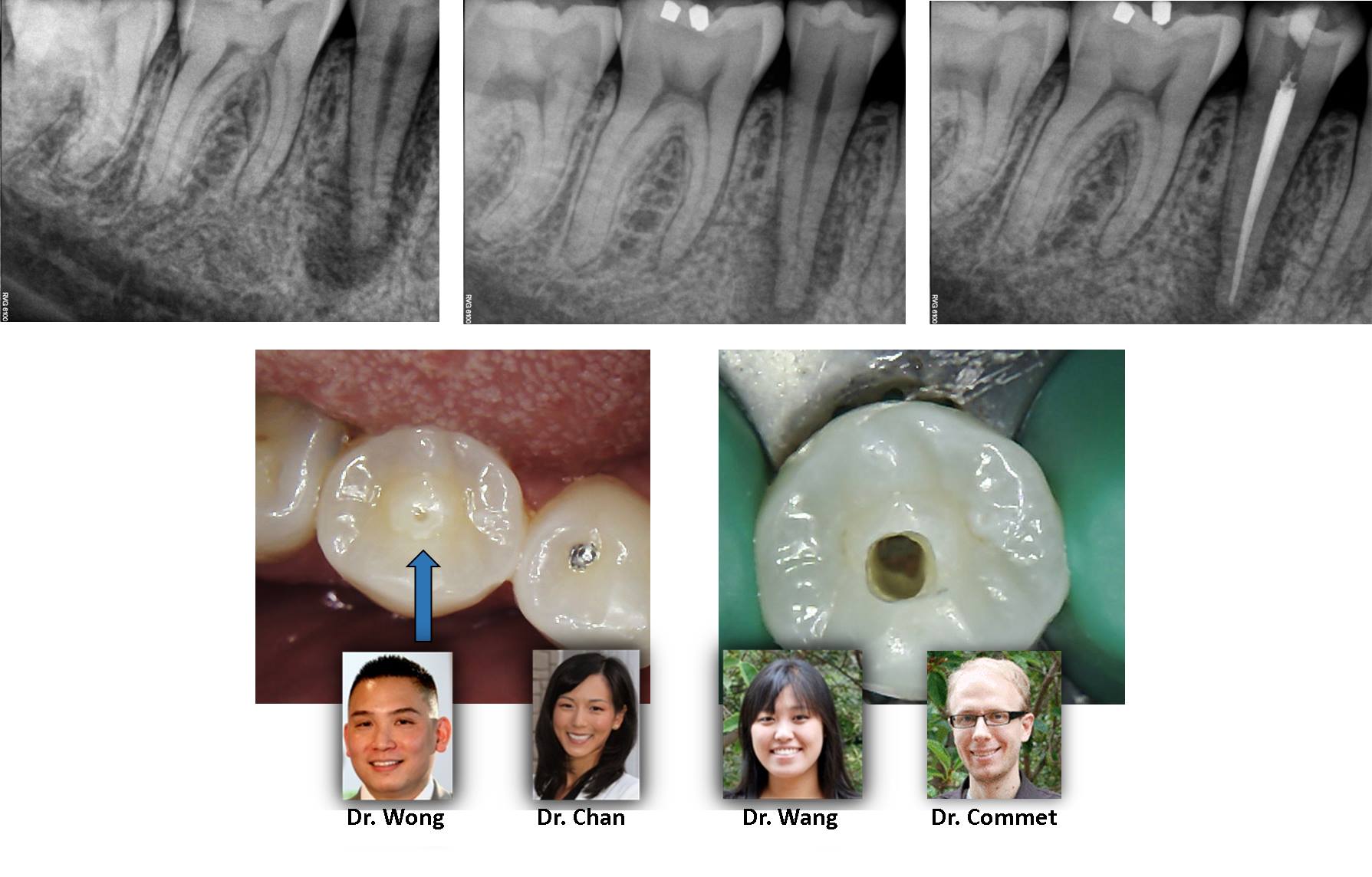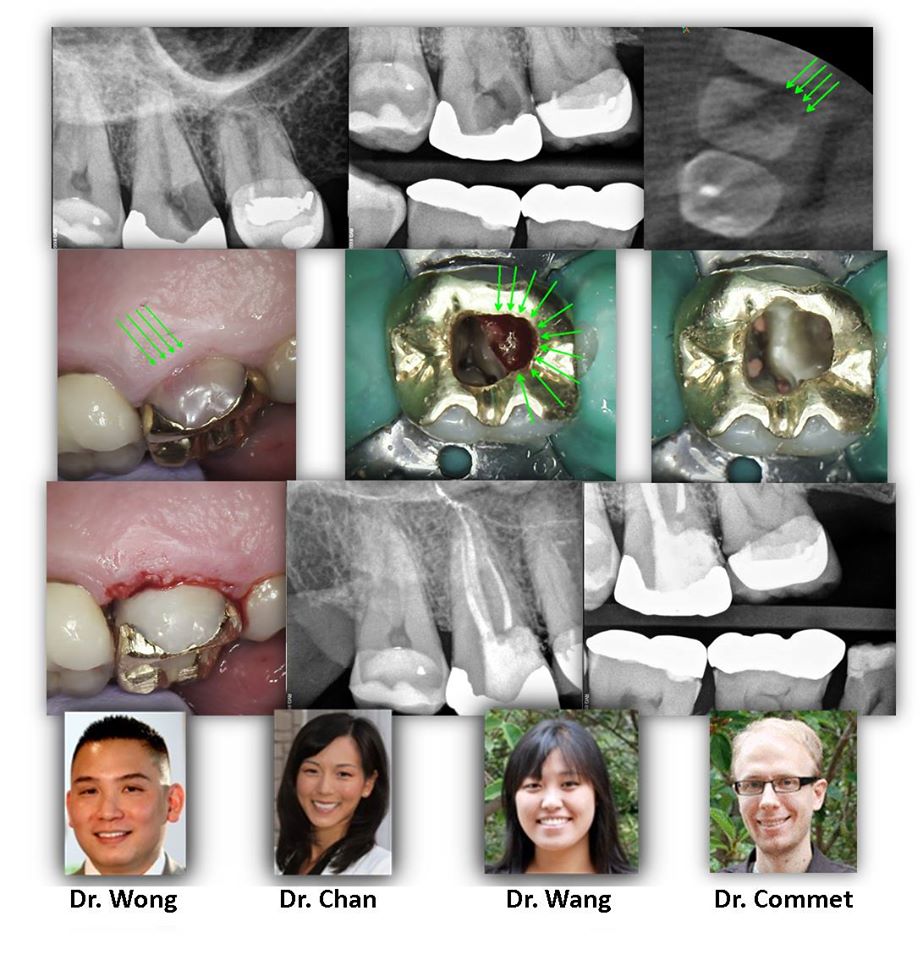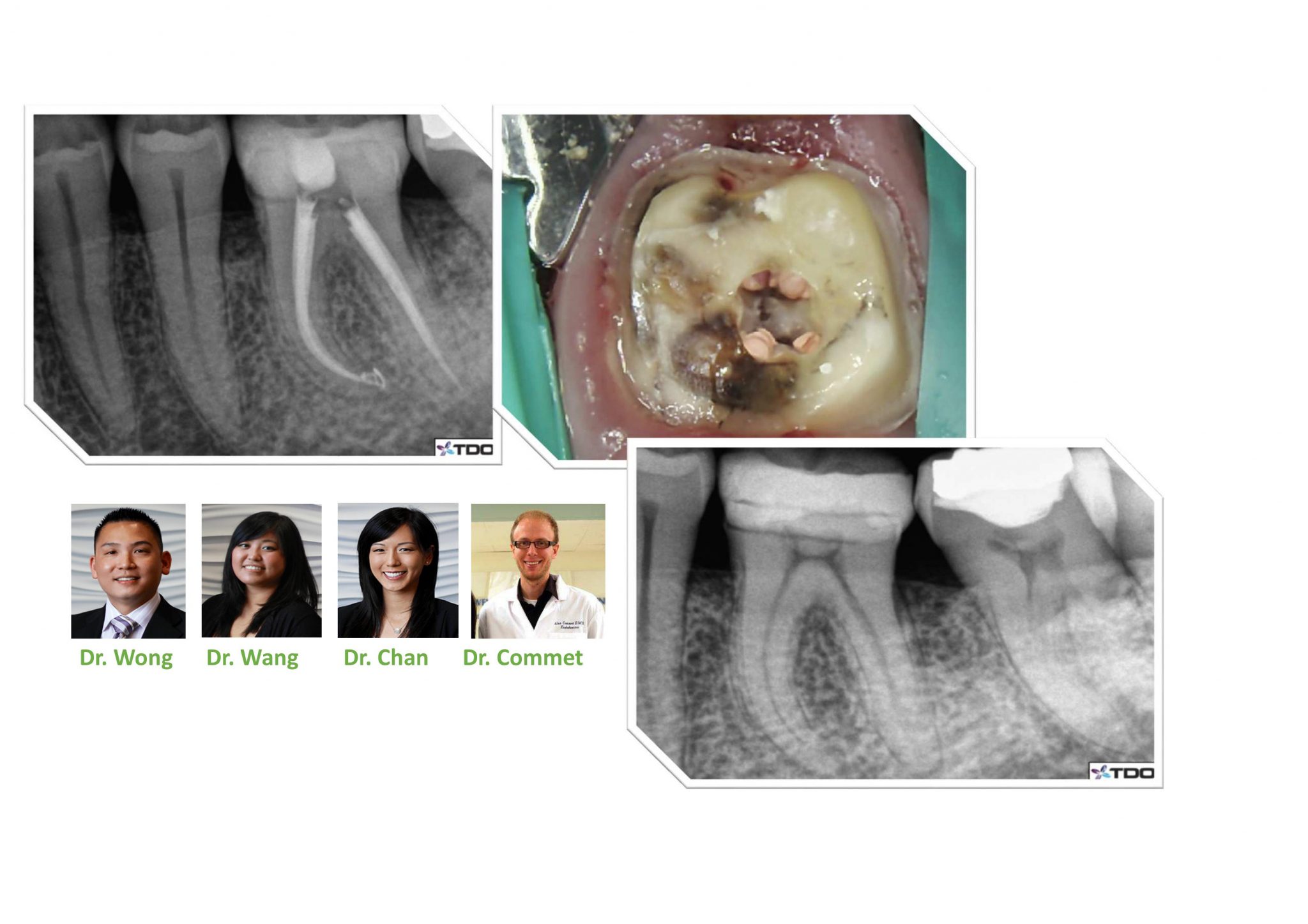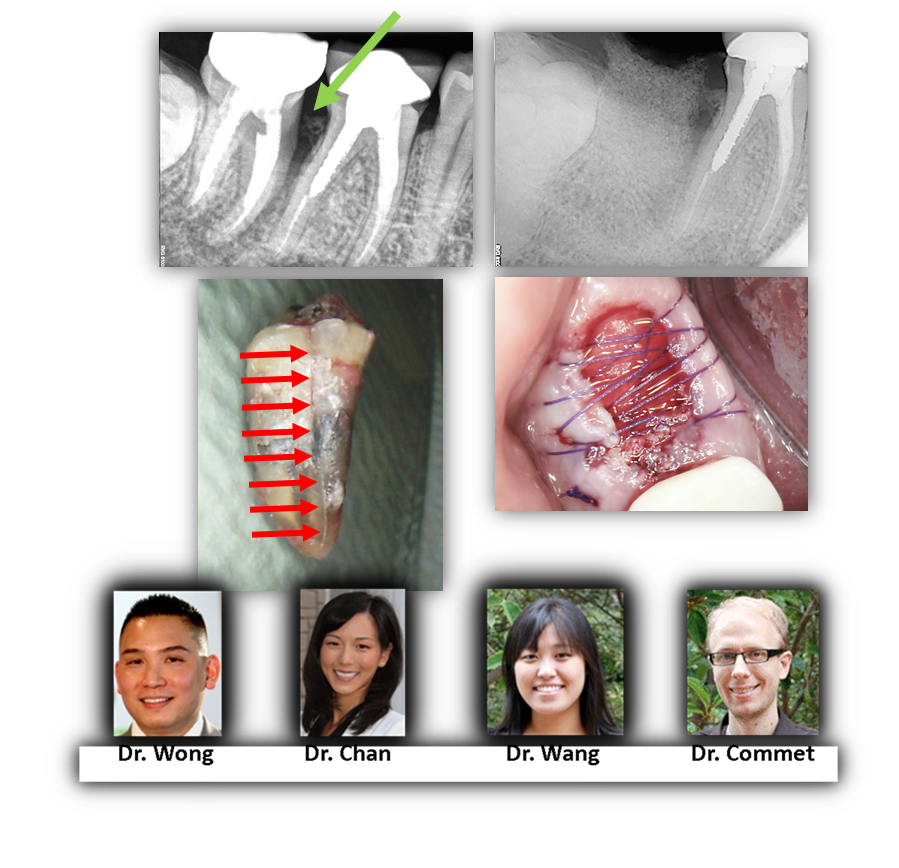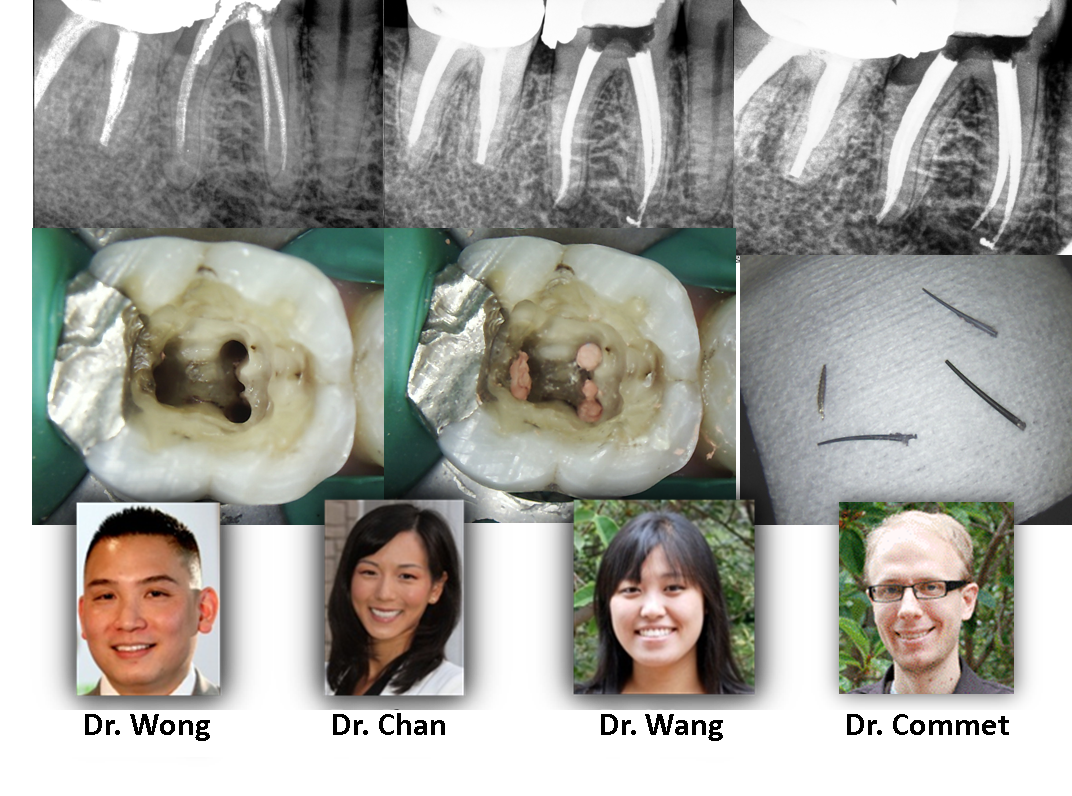This tooth demonstrates the pitfalls of a dens evaginatus. As can be noted on the clinical photograph, the atypical central cusp quickly wears due to attrition resulting in pulpal exposure and corresponding necrosis. Careful inspection of the occlusal anatomy is important in these cases as the radiographic appearance is similar to that of a vertical root fracture but this tooth has a very favorable prognosis. […]
Developmental Anomalies –
